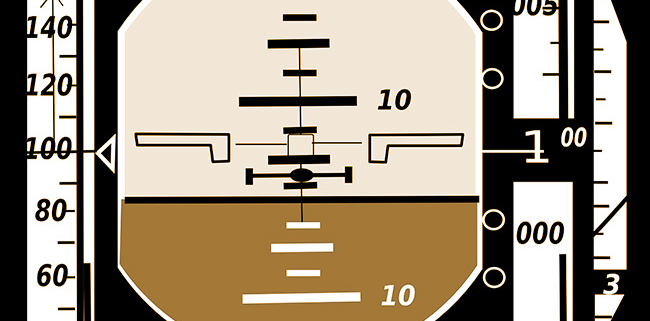Leadership Lessons from the Left Seat: Recovery from Unusual Attitudes
Believe it or not the chapter title is also the title of one of the required elements of the FAA Practical (actual flying) exam. It isn’t about the pilot’s mood rather about the aircraft’s position relative to the horizon and direction of flight. One of the most critical pieces of information a pilot must be aware of is the attitude of the aircraft. If that is misunderstood or not known at all then lots of bad things can happen. Without getting into the technical details a plane, like any object, orients in three axes. The point is that coordinated flight requires these axes to be in balance and working together during turns, climbs, and straight and level flight. One of the required test elements is the ability of the pilot to recover quickly from the plane being upset from straight and level. The test requires the student to have their vision limited while the examiner makes turns, climbs, descents, etc. long enough to completely disorient the student. Then the student is allowed to view only selected instruments while making quick corrections that will recover the plane to straight and level flight. This seems easy because even with your eyes closed you can determine if the plane is climbing and turning left or descending and turning right. Then you preplan your corrections so that when you open your eyes you already know what to do. Except it doesn’t work that way. After enough ups and downs and lefts and rights the human inner ear and brain lose track of which way is up. I’m told it takes seven changes to lose track but I don’t know if that is true. What I do know is that you will not be correct in guessing what the plane is doing based on what you feel. My instructor sunk this lesson in by having me initially not worry about controlling the plane just concentrate on whether we were climbing, turning left, etc. Never did I guess correctly. Then I reversed roles and he never guessed correctly. The point is that you cannot trust what you think or feel about the aircraft’s attitude. Your senses under certain conditions will always lead you astray. You must depend on facts as presented by your instruments. Thus the key to passing this part of the exam is to know which instruments to look at and act on what they tell you, so your preparation is in knowing where the artificial horizon data is displayed on your aircraft and how to read it quickly. Looking at the fuel gauge or exhaust gas temperature would not be helpful at that moment.
If you or your team or project is in an unusual or uncoordinated situation, how do you recover from it? What role do your feelings or senses play in what actions you take? Unlike flying there is sometimes a role for a leader’s intuition or judgment to play in recovering from a place you don’t want to be. But similar to flying you must really be discerning on whether and when to trust feelings and to know when your senses are lying to you. At worst case it can’t hurt to at least look at what your instruments are telling you. You may choose to disregard that information but do so very thoughtfully. In recovering from unusual attitudes in an aircraft the data you need (horizon reference primarily) is easily and quickly obtained and correction is usually one or two actions. The leader’s reality is more complicated in that data is not so easy to obtain and actions not so simple and immediate in effect. But it still helps to know what “instrument” may give useful information. So what are the kinds of instruments a leader may have to help them recover? How do find and read them? Referring back to the last chapter, a great place to begin is to gain perspective by getting a little higher above the problem(s). This often involves inviting others to be “instruments” for you. What readings can they give you? You might actually collect real data on team performance or conduct an employee survey. But whether hard data (like a survey) or soft data (like the perspective of others) the real issue, as in flying, is whether you trust the data enough to act on it. If you cannot overcome the bias of your personal feelings (your inner ear) you will ignore the data and fly into the ground. One of the greatest causes of aviation accidents is “loss of horizon/spatial disorientation”. Many pilots believed their senses more than their instruments and mistook the ground for the sky. It seems unlikely but it is sadly true. As a leader at least gather what your instruments can tell you and factor it into your recovery. A common resistance is that instruments can fail or be in error. While possible it is very unlikely, and given that we know for certain pilots cannot trust their own senses it is far better to assume the instrument is right. Likewise the leader who is ignoring data because “instruments might be in error” is usually saying “I don’t like what they are telling me” and allowing ego to drive the decision.
Have you needed to take action and course-correct in your role? What tools/actions did you use to persevere?





